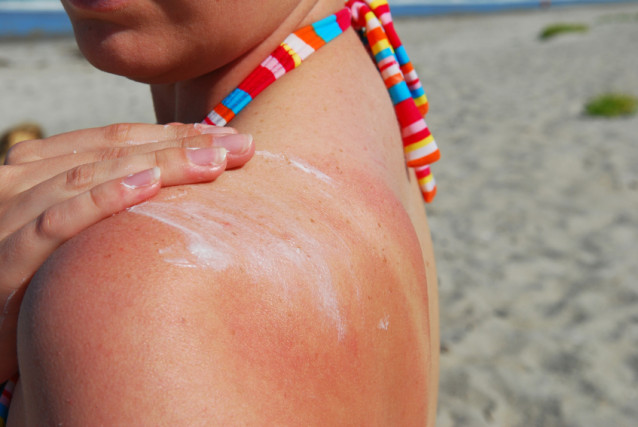What is UV Radiation
Ultraviolet (UV) Radiation is a portion of the electromagnetic spectrum, which falls between 20 and 400 nm. The main source of UV rays come from sunlight, but these rays can also be artificially generated in tanning booths, black lights, curing lamps, germicidal lamps, mercury vapor lamps, halogen lights, high-intensity discharge lamps, and lasers. UV Radiation can be further divided into three types, including: UVC, UVB, and UVA.
UVC rays have the shortest wavelength in the UV spectrum, ranging from 20-280 nm. While UVC is completely absorbed through the stratospheric ozone, the rays can still present a hazard if direct contact were to occur. Because these rays have the power to kill bacteria, exposure can cause corneal burns, snow blindness, and severe sunburn. UVB rays fall between 280-320 nm and are considered the most destructive when exposed. Although the energy emitted aids to the synthesis of vitamin D, UVB photochemical damage to DNA cells. There are an array of side effects associated with UVB and can range from a sunburn to the development of cancer. Cataracs and suppression to immune system are other results associated with UVB. UVA rays’ wavelength ranges from 320-400 nm and is necessary for vitamin D synthesis. The ozone absorbs very little UVA rays, making this the most common type of UV light. However, overexposure causes long-term skin damage and can also be linked to skin cancer. Possible effects include: photoaging, reddening of skin, lentigos, and actinic keratosis.
How is UV Radiation Measured
UV strength is dependent on various environmental factors and can be determined by the ultraviolet index. The UV Index forecasts the ray’s strength in a particular location at any given time. Various factors including: sun elevation, cloud cover, and amount of ozone, are accounted for in order to determine an index.
Based on the time of the year, the sun reaches different elevation levels making the strength of the rays fluctuate. During the winter months, the sun’s elevation is lower, creating lower radiation emissions. Oppositely, summer months yield higher radiation levels due the strengthened UV rays. The thickness of the ozone layer also determines the UV radiation strength. A thicker ozone prevents radiation from getting through, which decreases the overall strength. Additionally, the amount of cloud cover over a particular area can affect radiation exposure. Clouds act as a buffer and are able to deflect light and lower overall exposure.
Prediction of intensity levels range on a scale from 1-11, higher numbers yielding to higher risk of overexposure and damage. There are both immediate and long-term effects associated with overexposure. The most immediate effect includes sunburns, which are broken down by severity level. This can later lead to other problems including: immune system suppression, premature skin-aging, lentigos, and actinic keratosis. Long term effects of repeated overexposure includes different forms of skin cancer. Melanoma is the most deadly form of cancer and results from repeated occurrences of short-term damage.
Prevention
Although some of the side effects of UV overexposure are staggering, completely avoiding the sun is not necessary. According to the American Cancer Society, there are a variety of measures to take to still reap the benefits of UV light. It is extremely important to cover bare skin by wearing sunscreen and protect your eyes with sunglasses. Sunscreens offer a variety of different protection levels, with SPF 50 filtering about 98% of UV light. Buying products with sunscreen factored in like lip balms and lotions can also be extremely helpful when battling the day-to-day UV emissions. While clothing can be a strong protector, different fabrics yield higher protection. Colors of the fabric and how it is woven are all factors that can should be accounted for when covering up.
Additionally, one should avoid artificial UV radiation since the side effects are just as apparent. Tanning beds give off high levels of both UVA and UVB and are a primary cause of melanoma. Avoiding these as well as sunlamps will decrease your overall intake of UV radiation.





No Comment